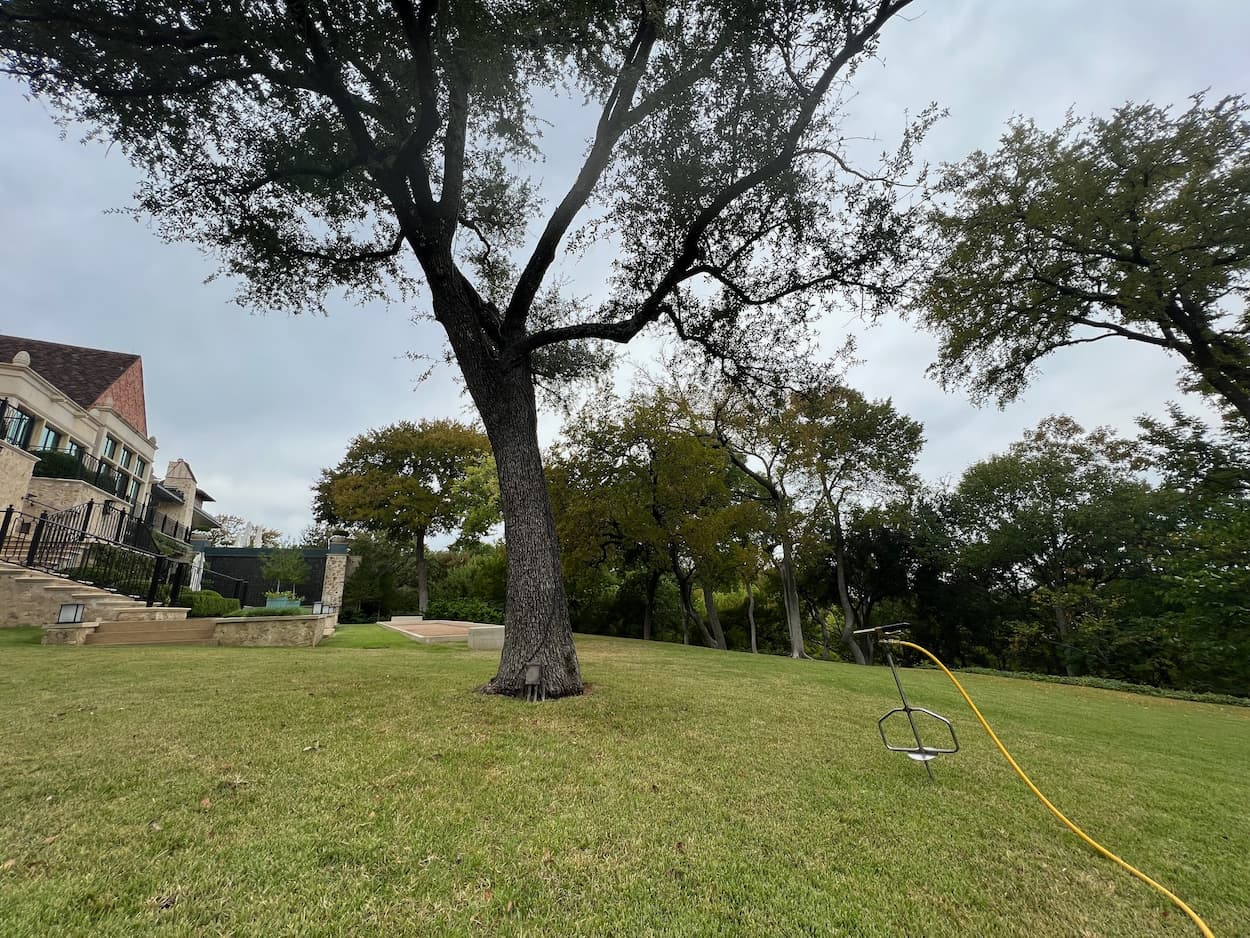Texas Shrubs & Tree Health Care Experts
Caring For Texas Shrubs & Trees Since 1990 Get A Free QuoteCall (817) 880-6130Tree & Shrub Pest Treatment Services in Newark, TX
Our ISA Certified Arborist Can Help Treat Your Trees and Shrubs From Pests in Newark, TX.
Arborist USA provides Tree & Shrub Pest Treatment Services in Newark, Texas, and the surrounding areas.
A hub of natural allure, Newark, TX, prides itself on its verdant vistas, populated with varied trees and shrubs. However, maintaining this tree-studded skyline demands a proactive approach to tree and shrub pest treatments, as these natural treasures can become vulnerable to harmful pests.
In conclusion, preserving Newark, TX’s eye-catching landscapes necessitates a proactive and efficacious approach towards tree and shrub pest control. This can be achieved by combining rapid treatments, preventive measures, professional expertise, and community involvement. Together, we can ensure a thriving, pest-free environment, preserving Newark’s green treasures for generations to come.
If you are in need of Tree & Shrub Pest Treatment Services in Newark, TX, please get in touch with Arborist USA today by calling us at (817) 880-6130, your Tree & Shrub Disease Specialist.
Signs of a Sick Tree or Sick Shrub
- Dead Branches
- Yellowing Leaves
- Fungi or Decay
- Bark Falling Off
- Discolored or Rusted Leaves
- Dying Tree or Shrub
- Leaf Discoloration
- Root or Insect Damage
- Leaves look like they’re being eaten
- Bark is Peeling
- Holes in leaves
- Holes on Bark or Branches
- Stunted Growth
- Canopy Dieback
- Bark Abnormalities
- Wilting
Tree & Shrub Helpful Tips
1. Identifying Pest Intruders:
Swift detection and proper identification of rampant pests, such as aphids, borers, beetles, mites, caterpillars, or scale insects, is a crucial step in preventing their adverse effects on Newark’s green environment.
2. Symptoms of Infestations:
Early indications of infestations may manifest as unnatural foliage discoloration, abnormal growth patterns, premature leaf drop, or uncommon bark lesions. Swift recognition of these signs paves the path to timely and effective solutions.
3. Swift Treatment Response:
Once an infestation is detected, treating it immediately minimizes the imminent damage and curbs further infestations, thus saving both plant lives and money
4. Professional Services:
Tree and shrub care professionals exhibit expertise in quick pest identification and formulating effective treatments. Through consistent monitoring and the development of adaptive pest management strategies, they bolster Newark’s ecological richness.
5. Treatment Techniques:
Depending on the pest type and infestation severity, treatment methods can vary. They might include biological and chemical treatments, physical solutions like pruning, and strategic cultivation techniques.
6. Abide by Prevention Protocols:
Regular maintenance measures including pruning, balanced fertilization, and adequate watering massively contribute to prohibiting the onset of pest invasions. Moreover, fostering local biodiversity helps maintain a stable ecosystem which inherently resists pest challenges.
7. Integrated Pest Management (IPM):
The adoption of this strategy, which integrates diverse, eco-friendly pest control methods, results in multi-dimensional and efficient pest treatment.
8. Balanced Ecosystems:
While combating pests is of prime importance, preserving beneficial insects and local wildlife is also critical. Professionals in pest management are adept at ensuring this balance, vital for overall ecosystem wellbeing.
9. Community Partnership:
Activating community involvement in spotting, deterring, and managing pest infestations greatly influences the success of pest management operations, thus protecting Newark’s green charm.
10. Educate and Spread Awareness:
Promoting knowledge about various pests, their signs, treatment plans, and prevention strategies amongst Newark’s citizens helps empower the community to partake in effective pest management.
If you’re concerned or have any further questions about our Tree & Shrub Pest Treatment Services in Newark, TX, or surrounding areas in North Texas, please call us at (817) 880-6130.
Tree & Shrub Pests
Listed below are common Tree & Shrub Pests found in Texas.
Aphids
A white soft body insect that creates a sticky "honey dew" structure on limbs or leaves, blocking nutrients.
Bagworms
Bagworms lay eggs that create small cone-shaped structures less than three inches in length.
Beetles
An invasive wood borer that is subject in all wood tissue that causes severe decline in trees health.
Gypsy Moth
A larva that boars into leaf structure that cause lesser of a foliation and decline in overall leaf structure.
Oak Gall
A growth deformity known as a "gall" commonly occur on oak trees subject to branches and other structures.
Termites
Termites, wood-destroying insect, eats away at all wood tissue, damaging the structures of the trees.
Twig Girdlers
Being a member of the long-horned beetle family, these girdlers are known to eat leaf and other tree areas.
Webworms
These caterpillars spin white webbing bag nests in tree branches and eat your tree foliage (leaves).
Certifications




Our Reviews

A+ BBB Rating based on 31 BBB Reviews
4.8/5.0 based on 83 Top Rated Local Reviews
4.6/5.0 based on 36 Facebook Reviews
4.0/5.0 based on 4 Trust Pilot Reviews

4.9/5.0 based on 90 Google Reviews
4.5/5.0 based on 13 Yelp Reviews
29 Recommendations on Nextdoor
Total Reviews: 286 ![]() Real Customer Reviews
Real Customer Reviews







